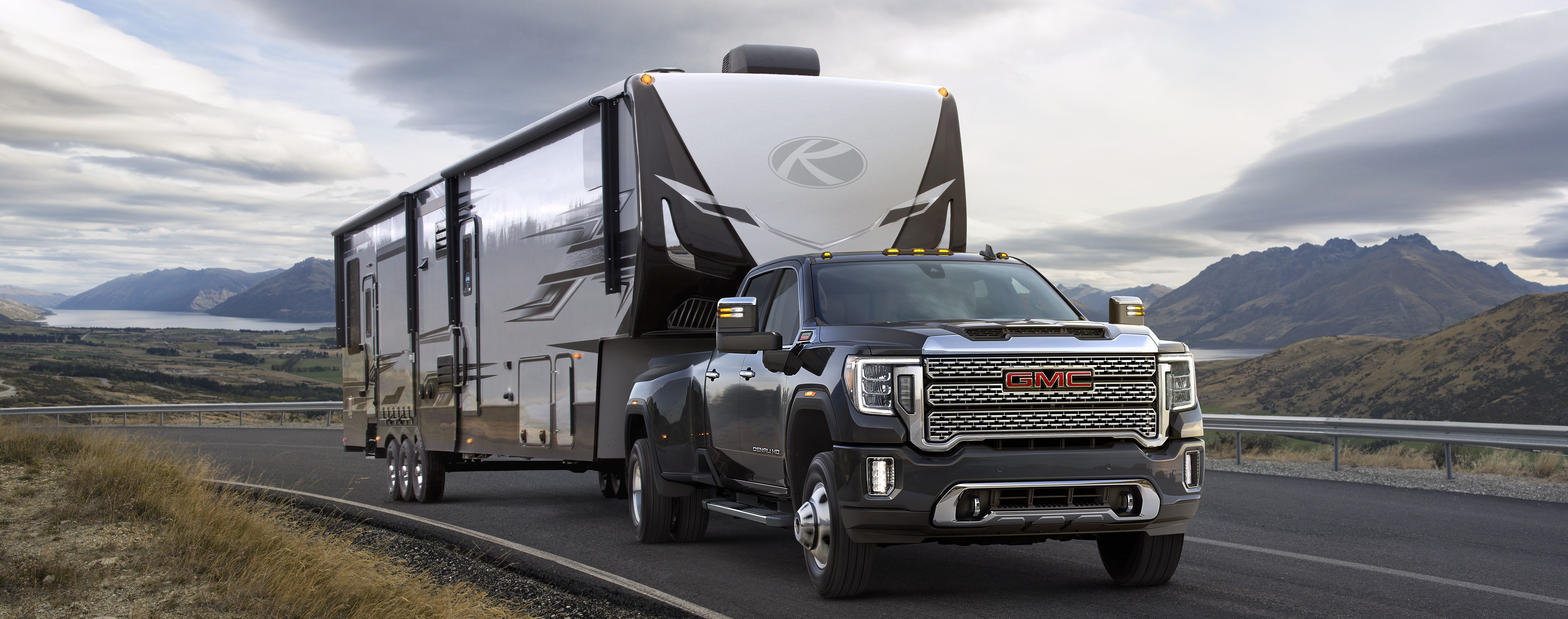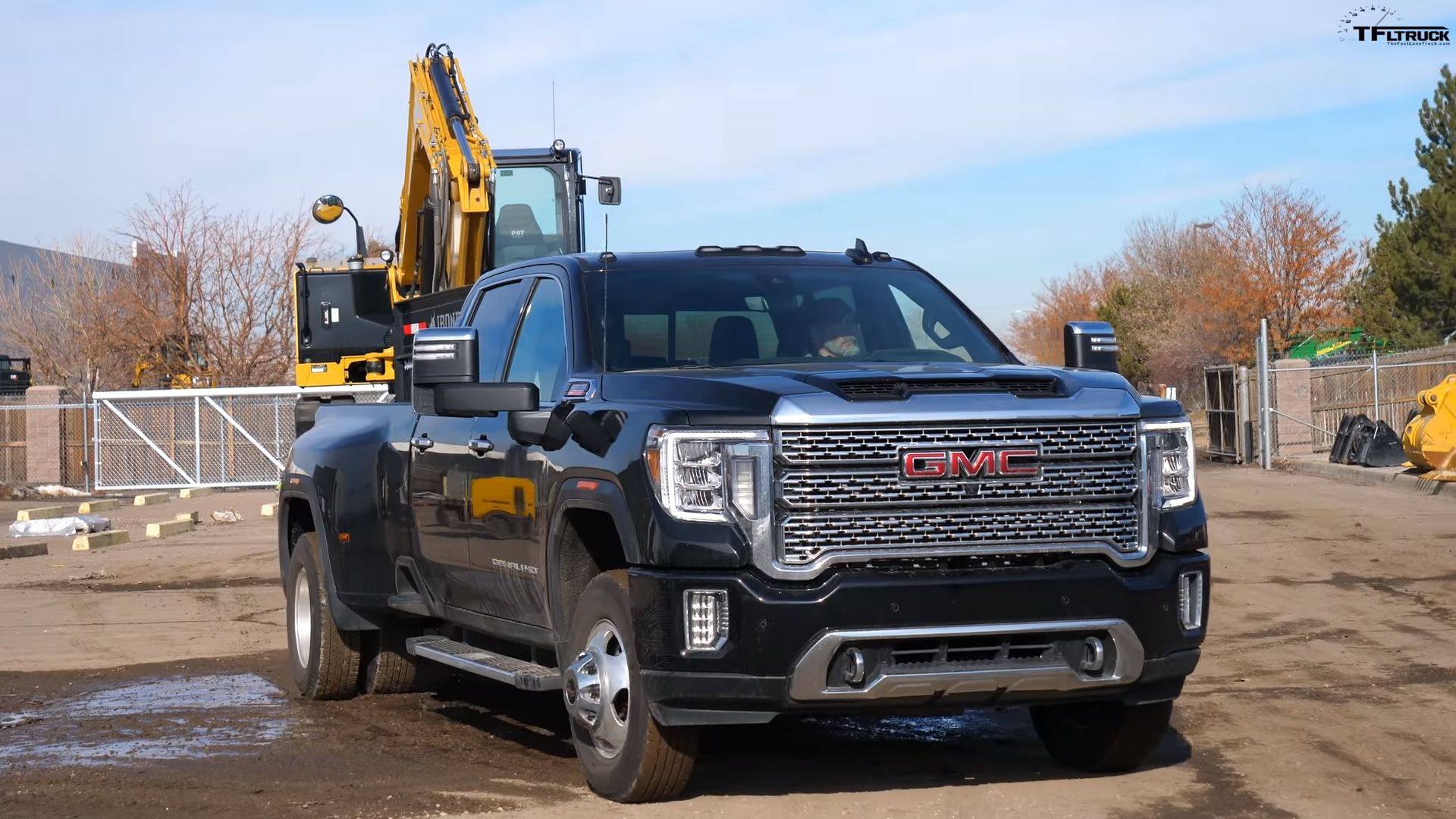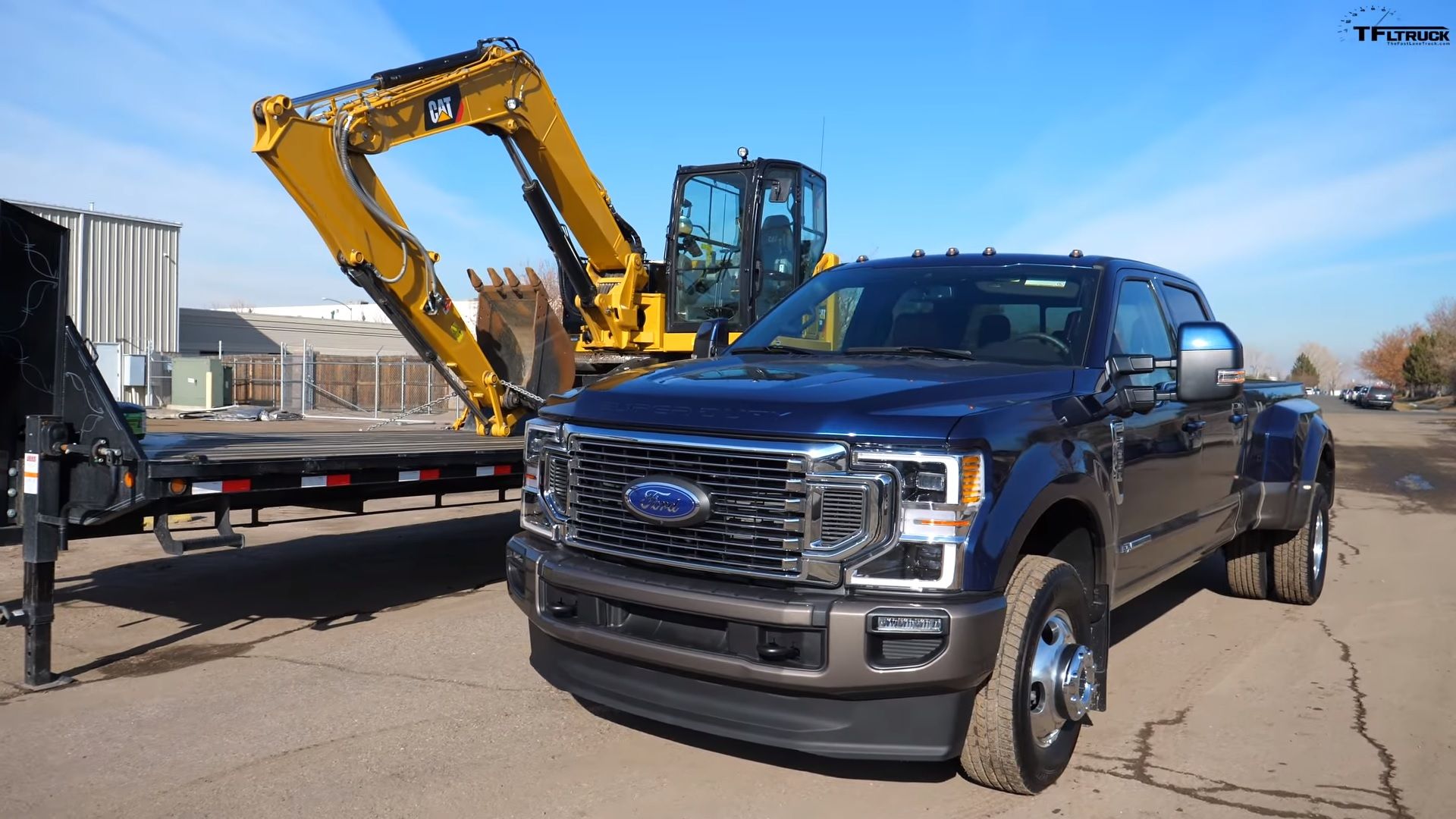The folks at TFL came up with the ultimate tests when it comes to heavy-duty trucks. The current crop of top-of-the-line heavy-duty trucks boasts of towing capacity in excess of 30,000 pounds, but how many of them actually use it to full capacity?
What’s worse is that these ratings aren’t tested by external agencies either. So, how well do the trucks fare when pushed to their limits? The TFL team decided to conduct this test on the 2020 GMC Sierra 3500 Denali and the 2020 Ford F-350 King Ranch. Oh, and they also took these trucks to the drag strip for a fun race. Are these big boys allowed to have this kind of fun? If yes, why weren’t we exposed to this kind of sacrilege before?
The GMC Sierra 3500 Gets Decent Fuel Economy Under Heavy Load But the F-350 Does Better
First off, the GMC Sierra 3500 Denali was hitched to an Ironbull trailer with a CAT mini excavator on it. Together, they weigh about 30,000 pounds. The guys took off with it and it performed fairly well given the weight it had on its ass. In the end, it delivered 6.9 miles per gallon in a full tank method. The onboard computer displayed 7.2 mpg, which wasn’t a world of difference. Pretty good to see the on-board diagnostics display almost accurate figures. The EPA doesn't require fuel-economy testing for heavy-duty trucks, but according to Trucks.com, independent tests show the Sierra 3500HD averages about 14 mpg without any extra weight.
On the same "tankful method", however, The Ford F-350 it returned 7.8 mpg under the same weight. That is almost one mpg more than the GMC Sierra Denali, despite being the more powerful one here. Without any weight attached, Ford Authority reports that the F-350 can deliver 15.5 mpg.
What Powers the Sierra 3500HD and Ford F-350?
Power gets sent to all the wheels via a 10-speed Allison automatic transmission. The GMC truck is rated at 31,100 and 5,207 pounds for towing and payload, respectively. The Sierra 3500 Denali is priced at just over $81,000.
The other truck in question is the 2020 Ford F-350 King Ranch, loaded with add-on accessories that bring the price close to $82,000.
Power is sent to all the six wheels via a 10-speed automatic gearbox. If you're interested in the towing and payload capacities, know they are rated at 31,300 and 5,314 pounds, respectively. Even at this high price point, both of these trucks are closely stacked one to each other in terms of specifications.
The Sierra 3500HD and Ford F-350 Are Quite Fast Too
Three drag races were conducted, with the first one being rendered moot due to a false start of sorts. In the other two, the F-350 won quite comfortably, in fact, even achieving a 0-60 mph time of 7.75 seconds.
For trucks this size, I think that’s a rather remarkable figure. On the return journey with the 30,000-pound ride hitched to its derriere, even the F-350 suspiciously displayed 7.2 mpg as the average fuel consumption.
Final Thoughts
Such experiments bring only one question to mind – can EV trucks replace these internal combustion-engined trucks entirely? We recently saw Audi E-Tron’s range get halved when it was towing to its manufacturer-stated capacity.
Are heavy haulers ready to embrace electrification? Share your thoughts in the comments section below.




